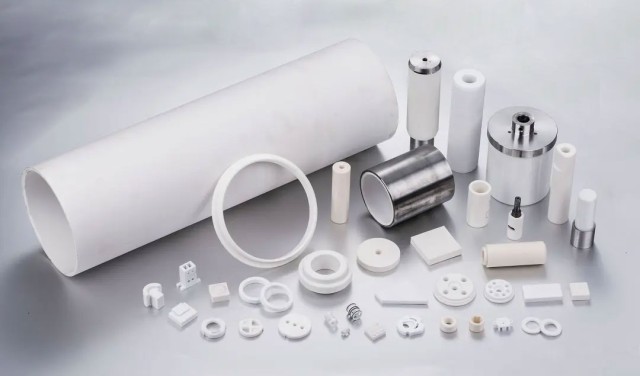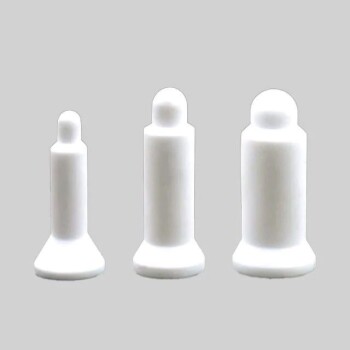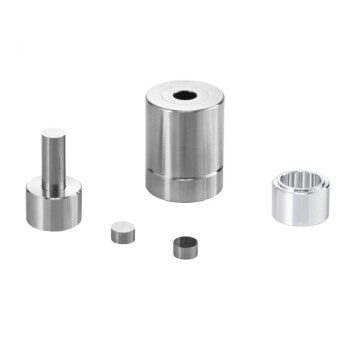Applications of Alumina Ceramics
Mechanical Applications
Alumina ceramics are extensively utilized in various mechanical components due to their exceptional mechanical properties. These materials are integral to the manufacturing of tools, ball valves, grinding wheels, ceramic nails, and bearings. The high bending strength of alumina ceramics ensures that these components can withstand significant mechanical stress without failure. Additionally, their hardness and wear resistance make them ideal for applications where durability and longevity are paramount.
For instance, in the automotive industry, alumina ceramic bearings are preferred over traditional metal bearings due to their ability to operate under high speeds and load conditions without significant wear. Similarly, in the aerospace sector, alumina ceramic tools are used for machining high-strength alloys, where their hardness prevents tool wear and extends tool life.
The versatility of alumina ceramics in mechanical applications is further highlighted by their use in grinding wheels. These wheels, made from alumina ceramics, offer superior grinding performance and a longer lifespan compared to conventional materials. This not only reduces maintenance costs but also enhances operational efficiency in industrial settings.
In summary, the mechanical applications of alumina ceramics are vast and varied, leveraging their unique combination of high bending strength, hardness, and wear resistance to deliver superior performance in demanding environments.
Electronics/Electricity Applications
Alumina ceramics play a pivotal role in the electronics and electrical industries, leveraging their exceptional insulating properties and minimal high-frequency losses. These ceramics are integral to the fabrication of base plates, substrates, and ceramic films, which are essential components in the design and operation of electronic devices. The use of alumina ceramics in these applications ensures not only electrical insulation but also stability under varying operational conditions, making them indispensable in high-precision electronics.
In the realm of transparent ceramics, alumina ceramics offer a unique blend of optical clarity and electrical insulation, making them suitable for applications that require both properties. This dual capability is particularly valuable in devices where optical transparency is necessary for operation, such as in certain types of sensors and displays.
Moreover, the electrical insulation materials derived from alumina ceramics are crucial in maintaining the integrity of electrical systems. They prevent short circuits and signal interference, thereby enhancing the reliability and performance of electronic equipment. The low high-frequency loss characteristic of these materials ensures efficient signal transmission, which is critical in modern communication technologies.
In summary, the applications of alumina ceramics in the electronics and electrical sectors are vast and varied, reflecting their unique combination of insulating properties and operational robustness. This makes them a cornerstone material in the ongoing advancement of electronic technologies.
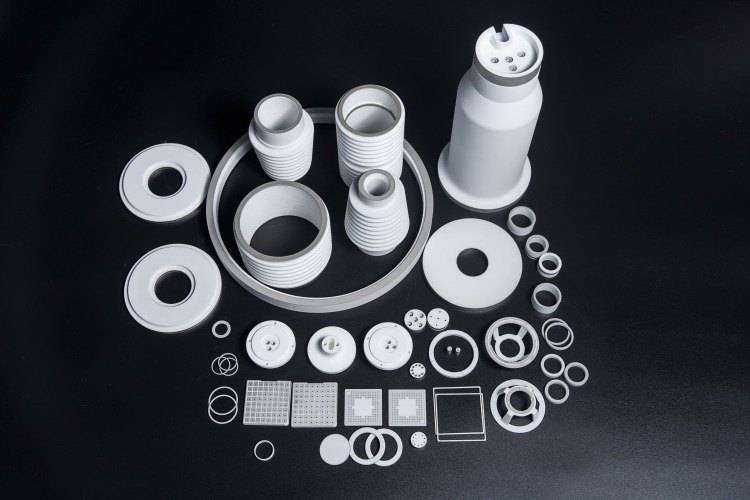
Chemical Industry Applications
Alumina ceramics play a crucial role in the chemical industry, primarily due to their unparalleled resistance to corrosive environments. This property makes them indispensable in several key applications. One notable use is in chemical filler balls, where their inertness ensures that they do not react with the chemicals they are exposed to, thereby maintaining the integrity of the chemical processes.
In the realm of inorganic microfiltration membranes, alumina ceramics offer a robust solution for separating particles in various chemical mixtures. Their high mechanical strength and thermal stability allow these membranes to withstand the harsh conditions often encountered in chemical processing, ensuring consistent filtration performance over time.
Additionally, alumina ceramics are extensively used in corrosion-resistant coatings. These coatings protect underlying materials from the damaging effects of corrosive agents, extending the lifespan of industrial equipment. The excellent corrosion resistance of alumina ceramics makes them a preferred choice for coating applications where durability and reliability are paramount.
| Application | Key Benefits |
|---|---|
| Chemical Filler Balls | Inertness, maintains chemical process integrity |
| Inorganic Microfiltration Membranes | High mechanical strength, thermal stability, consistent filtration performance |
| Corrosion-Resistant Coatings | Protects underlying materials, extends equipment lifespan |
The combination of these applications highlights the versatility and robustness of alumina ceramics in the chemical industry, making them a cornerstone material for various critical processes.
Medical Applications
Alumina ceramics have found significant applications in the medical field, particularly in the development of artificial bones, joints, and teeth. Their biocompatibility ensures that these materials do not elicit adverse reactions when in contact with living tissues, making them ideal for long-term implantation. The inertness of alumina ceramics further enhances their suitability, as they do not corrode or degrade in the body, providing a stable and durable solution for medical implants.
Moreover, the high hardness of alumina ceramics ensures that these implants can withstand the mechanical stresses encountered in the human body. This property is crucial for the longevity and effectiveness of artificial bones and joints, which need to endure constant movement and pressure. The use of alumina ceramics in dental applications is also widespread due to their ability to mimic the natural hardness and wear resistance of tooth enamel, ensuring a more natural and durable restoration.
| Property | Benefit in Medical Applications |
|---|---|
| Biocompatibility | No adverse reactions with living tissues |
| Inertness | No corrosion or degradation in the body |
| High Hardness | Endures mechanical stresses, suitable for long-term use |
In summary, the unique combination of biocompatibility, inertness, and high hardness makes alumina ceramics an invaluable material in the medical field, contributing to the development of reliable and durable medical implants.
Characteristics and Manufacturing Techniques
Powder Pressing Blanks
Powder pressing is a fundamental technique in the manufacturing of advanced alumina ceramics, involving the application of pressure to compact ceramic powder into a blank. This method is particularly valued for its ability to produce blanks with precise dimensions and a straightforward operational process. However, the durability of the molds used in this technique is a notable limitation. The constant mechanical stress exerted during the pressing process leads to significant wear, necessitating regular replacement of molds to maintain production quality.
This technique is particularly advantageous for its simplicity and the precision it offers, making it a preferred choice for initial shaping of ceramic components. Despite the need for frequent mold replacements, the overall process remains cost-effective and efficient for producing high-quality ceramic blanks. The repetitive nature of the pressing process, however, underscores the importance of mold material selection and design to mitigate wear and extend their operational lifespan.
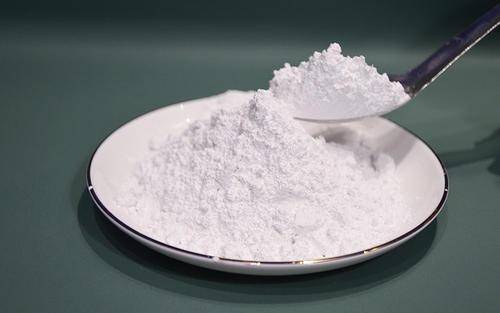
In summary, while powder pressing provides a reliable and accurate method for forming ceramic blanks, the frequent need to replace molds due to wear is a critical aspect that manufacturers must manage effectively to optimize production efficiency and cost.
Isostatic Pressing of Blanks
Isostatic pressing is a sophisticated powder metallurgy technique that employs a fluid medium to apply uniform pressure to ceramic powder. This method ensures that the pressure is evenly distributed across all surfaces of the powder, leading to the creation of a highly dense and uniform blank. The process involves placing the powder inside a closed container filled with liquid, which is then subjected to high pressure. This uniform pressure compaction results in a blank with exceptional density and strength.
One of the key advantages of isostatic pressing is its ability to produce blanks with maximum uniformity of density and microstructure. Unlike uniaxial pressing, which is limited by geometrical constraints, isostatic pressing can achieve this uniformity without such limitations. This makes it particularly suitable for forming complex shapes and intricate designs that other pressing methods might struggle with.
However, the sophistication of the isostatic pressing process comes with a cost. The equipment required for this method is both complex and expensive, which can be a significant barrier for smaller operations or those with limited budgets. Additionally, the process itself is more intricate, requiring careful control and monitoring to ensure optimal results. Despite these challenges, the high-quality blanks produced by isostatic pressing make it a valuable technique in industries where material performance is critical, such as in the production of advanced alumina ceramics.
Injection Molding Green Body
Injection molding is a sophisticated technique that produces green bodies with remarkable strength and uniformity. This method is particularly advantageous for creating intricate shapes and achieving near-net size molding. The process involves a minimal use of organic binders, which simplifies the subsequent plastic removal stage.
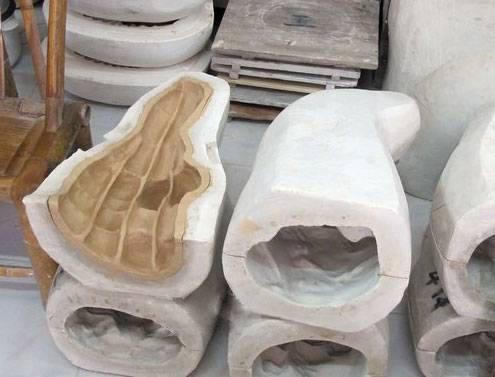
Compared to traditional methods, injection molding offers several distinct benefits:
- Complex Shape Compatibility: It excels in forming complex geometries that are challenging to achieve with other techniques.
- Uniformity and Strength: The green bodies exhibit high uniformity and strength, ensuring consistent quality across different parts.
- Reduced Organic Content: By minimizing the use of organic materials, the process lowers the risk of defects and enhances the overall quality of the final product.
- Ease of Plastic Removal: The reduced organic content facilitates easier and cleaner plastic removal, streamlining the manufacturing process.
| Benefit | Description |
|---|---|
| Complex Shapes | Ideal for intricate designs, overcoming limitations of simpler molding methods. |
| Uniformity and Strength | Ensures high-quality, consistent parts with robust mechanical properties. |
| Low Organic Content | Minimizes defects and simplifies post-processing steps. |
| Easy Plastic Removal | Facilitates a cleaner, more efficient removal process. |
This method is not only efficient but also highly versatile, making it a preferred choice in industries where precision and complexity are paramount.
Isostatic Pressing Process
Principle of Isostatic Pressing Technology
Isostatic pressing technology is a sophisticated method that employs high-pressure liquid to uniformly apply pressure to a green body. This process ensures that the green body undergoes a highly densified transformation, resulting in a material that is both dense and uniform. The technique involves placing the product within a closed container filled with liquid, where equal pressure is applied to all surfaces. This uniform application of pressure significantly increases the density of the material under high pressure, ultimately achieving the desired shape and structural integrity.
The isostatic pressing process is not only versatile but also highly effective across various industries. It has found extensive applications in the shaping of high-temperature refractory materials, ceramics, cemented carbides, lanthanon permanent magnets, carbon materials, and rare metal powders. The ability to consolidate powders or heal defects in castings makes it a valuable tool in material science and engineering.
One of the key characteristics of isostatic pressing is its ability to apply a uniform, equal force over the entire product, irrespective of its shape or size. This feature is particularly advantageous for ceramic and refractory applications, where achieving precise tolerances is crucial. The process not only reduces the need for costly machining but also significantly enhances the commercial viability of the final product.
In summary, isostatic pressing technology stands out for its ability to produce highly densified and uniform green bodies through the uniform application of high-pressure liquid. Its widespread adoption across diverse industries underscores its effectiveness and versatility in material processing.
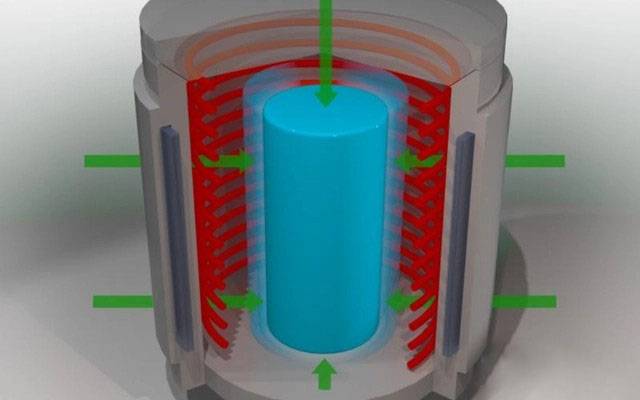
Advantages of Isostatic Pressing
Isostatic pressing stands out in the realm of ceramic manufacturing due to its unique capabilities. One of its primary advantages is the high green body density it achieves. This is made possible by the uniform application of pressure in all directions, which eliminates the need for lubricants and ensures a consistent density throughout the material.
The process also excels in forming complex shapes. Unlike unidirectional pressing methods that are constrained by rigid dies, isostatic pressing removes many of these geometric limitations. This flexibility makes it ideal for creating intricate parts that would be difficult to produce using traditional methods.
Moreover, isostatic pressing offers good strength and uniform density in all directions. This isotropic nature of the material is particularly beneficial for applications requiring high mechanical integrity and reliability. The process is also highly efficient with difficult-to-compact and expensive materials such as superalloys, titanium, tool steels, stainless steel, and beryllium, maximizing material utilization.
| Advantage | Description |
|---|---|
| High Green Body Density | Uniform pressure in all directions eliminates need for lubricants, achieving high and uniform density. |
| Ability to Form Complex Shapes | Removes geometric constraints of unidirectional pressing, ideal for intricate parts. |
| Good Strength | Isotropic nature ensures uniform strength in all directions. |
| Uniform Density | Uniform pressure results in consistent density throughout the material. |
| Efficient Material Utilization | Highly efficient with difficult-to-compact and expensive materials. |
Disadvantages of Isostatic Pressing
While isostatic pressing offers several advantages, such as high compact densities and the ability to form complex shapes, it is not without its drawbacks. One of the primary disadvantages is its low dimensional accuracy. This limitation stems from the nature of the process, where the pressure applied is uniform in all directions, making it challenging to achieve precise dimensional control.
Another significant issue is the complexity of the process itself. Isostatic pressing requires specialized equipment and molds, typically made from high-purity, high-strength graphite, which are both expensive and intricate to manufacture. Additionally, the equipment often needs to be imported, further increasing the cost and complexity. This makes the process less suitable for industrial continuous production, where simplicity and cost-effectiveness are paramount.
Production efficiency is also a concern. The process involves multiple steps, including loading and unloading of molds, which can be time-consuming and labor-intensive. The wet bag variation, while better suited for large parts, suffers from decreased productivity due to these steps, limiting automation potential. The dry bag version, though more automated, still faces challenges in maintaining high production rates due to the overall complexity of the process.
Moreover, the uniformity of the target grain is often poor, which can affect the final product's mechanical properties. Despite the high densities achievable, the lack of grain uniformity can lead to inconsistencies in strength and durability.
In summary, while isostatic pressing is a powerful technique for achieving high densities and complex shapes, its low dimensional accuracy, process complexity, and low production efficiency present significant challenges that need to be carefully managed.
Comprehensive Molding Method
The integration of dry pressing and isostatic pressing techniques presents a synergistic approach to ceramic molding, offering a green body with exceptional density and superior dimensional accuracy. Dry pressing, known for its simplicity and rapid production capabilities, excels in forming simple shapes but often falls short in achieving the intricate details and uniform density required for more complex geometries. Conversely, isostatic pressing leverages fluid pressure to uniformly compress the ceramic powder, resulting in a green body with high density and strength but at the expense of dimensional precision and operational complexity.
By combining these two methods, manufacturers can harness the strengths of each technique. Dry pressing can be employed initially to create a rough shape with the necessary dimensions, followed by isostatic pressing to refine and uniformly densify the green body. This dual-step process not only enhances the overall density and strength of the ceramic component but also significantly improves its dimensional accuracy. The result is a green body that is both highly dense and precisely shaped, meeting the stringent requirements of advanced ceramic applications.
This comprehensive molding method is particularly advantageous for producing ceramics with intricate shapes and high mechanical properties, such as those used in aerospace, medical implants, and high-performance electronics. The ability to achieve both high density and dimensional accuracy through this combined approach underscores its efficacy in the realm of advanced alumina ceramics manufacturing.
Advanced Alumina Ceramic Molds
Traditional Dry Pressing Molds
Traditional dry pressing molds are indispensable tools in the ceramic manufacturing process, particularly for producing simple-shaped products. These molds excel in offering rapid production cycles, making them suitable for high-volume manufacturing environments. However, their utility is confined to straightforward geometries, limiting their application in more complex designs.
The dry pressing process involves loading tungsten carbide-cobalt (WC–Co) powders into the molds manually or through automated systems. The filled mold, along with the pressure vessel, is then secured within the press frame. The compaction process, which typically lasts between 5 to 10 minutes, yields a green compact ready for subsequent processing. This method is particularly effective for pressing rods, tubes, and other simple shapes with diameters up to 200 mm and lengths up to 600 mm.
One notable advantage of dry pressing molds is their ability to produce components with wall thicknesses as thin as 2 mm, maintaining tolerances within the range of 0.1–1 mm. This precision is crucial for many industrial applications where dimensional accuracy is paramount.
Despite their efficiency, dry pressing molds require specific materials that exhibit thixotropy—a property essential for the uniform transfer of pressure to the powder. The mold material's viscosity must decrease under pressure to ensure proper compaction, then return to its initial state once the pressure is released, facilitating subsequent press cycles.
In summary, while traditional dry pressing molds are ideal for quick production of simple-shaped ceramics, their design constraints necessitate the use of alternative methods for more intricate geometries.
Application of Isostatic Pressing Molds
Isostatic pressing molds are integral to the production of advanced ceramics, including silicon carbide, silicon nitride, alumina, and zirconia. These molds facilitate the formation of intricate shapes with high density and superior mechanical properties. The isostatic pressing process involves subjecting the ceramic powder to uniform pressure through a liquid medium, ensuring that all surfaces of the product are equally compressed. This method not only enhances the density but also minimizes sintering shrinkage and deformation, making it ideal for creating long, thin rod-like or tube-shaped components that are challenging to produce using conventional molding techniques.
The benefits of using isostatic pressing molds are manifold. Firstly, the high and uniform density achieved through this process results in products with exceptional strength and machinability, significantly reducing internal stress. Secondly, the molds themselves are relatively easy to manufacture, offering a long service life and lower overall production costs. Additionally, isostatic pressing supports the creation of large-sized compacts, enabling multiple compactions within a single cylinder, thereby increasing production efficiency and versatility.
In summary, isostatic pressing molds are a cornerstone in the advanced ceramics industry, providing a robust solution for producing high-quality ceramic components with complex geometries and superior mechanical properties.
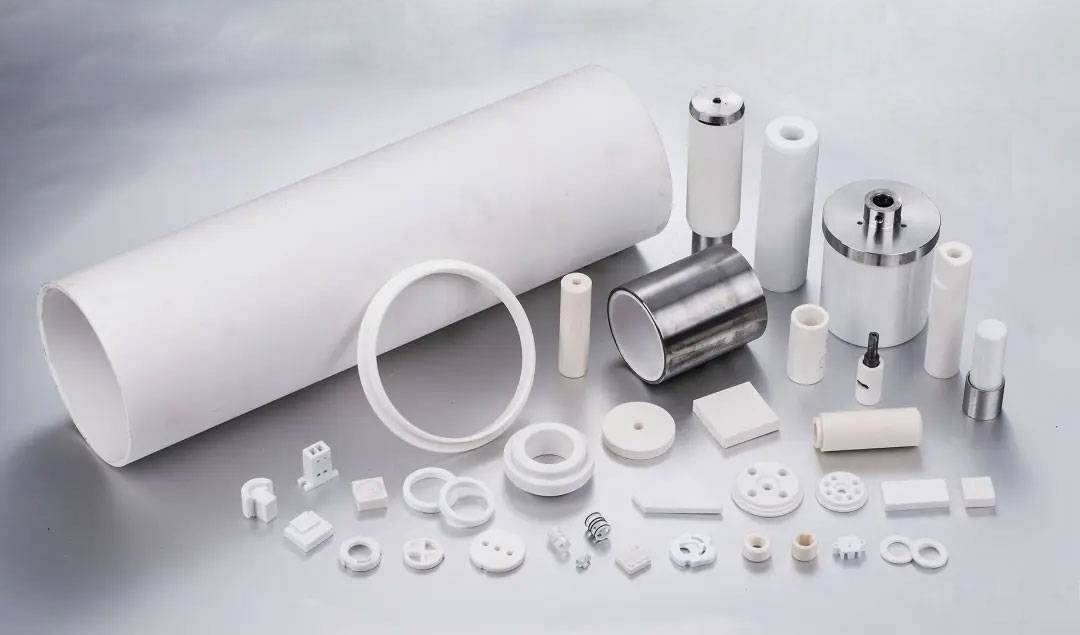
Adjustable High-Purity Alumina Ceramic Mold
The innovative design of adjustable high-purity alumina ceramic molds introduces a significant advancement in ceramic manufacturing, particularly in the realm of complex shapes and efficient production workflows. Unlike traditional dry pressing molds that are limited to simple shapes and require frequent replacement due to wear, these adjustable molds offer unparalleled flexibility and ease of use.
One of the key features of these molds is their ability to adapt to various geometries, allowing manufacturers to produce intricate ceramic components with precision. This adaptability not only enhances the range of products that can be manufactured but also reduces the need for multiple molds, thereby streamlining the production process.
Moreover, the ease of removing processed ceramics from these molds is a notable improvement over conventional methods. The adjustable design ensures that ceramics can be extracted without damage, minimizing waste and increasing the overall yield of high-quality products. This feature is particularly beneficial in industries where the integrity of the final product is critical, such as in medical and electronics applications.
In summary, the adjustable high-purity alumina ceramic molds represent a leap forward in manufacturing practicality, offering a versatile solution for producing complex ceramic components with ease and efficiency.
Related Products
- Custom-Made Alumina Zirconia Special-Shaped Ceramic Plates for Engineering Advanced Fine Ceramics Processing
- High Purity Alumina Granulated Powder for Engineering Advanced Fine Ceramics
- High Temperature Alumina (Al2O3) Furnace Tube for Engineering Advanced Fine Ceramics
- High Temperature Wear-Resistant Alumina Al2O3 Plate for Engineering Advanced Fine Ceramics
- Engineering Advanced Fine Ceramics Aluminium Oxide Al2O3 Ceramic Washer for Wear-Resistant Applications
Related Articles
- Optical Quartz Plate: A Comprehensive Guide to Applications, Specifications, and Usage
- Top 5 Features of a High-Quality Zirconia Sintering Oven
- Dental Furnaces The Perfect Solution for Porcelain Processing
- Dos and don'ts during the installation of molybdenum disilicide (MoSi2) heating element
- Cold Isostatic Pressing for Medical Applications Challenges and Solutions
